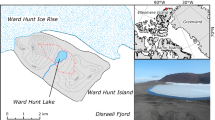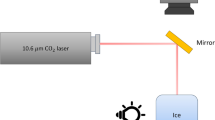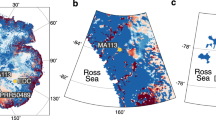Abstract
I HAVE just read Mr. James McConnel's interesting and important paper on the plasticity of ice (NATURE, vol. xxxix. p. 203), and as he remarks that it would be interesting to know whether the columnar structure he describes as occurring in the ice of the St. Moritz Lake has been observed in England, I venture to ask you to record the fact that I recollect seeing a precisely similar structure in the ice of the lake in Kew Gardens in February 1880. The phenomenon occurred during a thaw that preceded by a day or two the memorable snowstorm of that month, and the aspect of the ice, where it had been broken through, recalled to my mind that of the well-known fossil Lithostrotion basaltiforme, as it was built up of vertical columns, irregularly hexagonal in section, about a quarter of an inch in diameter and of equal length with the thickness of the ice, about 4 or 5 inches. If I remember aright, bright sunshine had been thawing the ice during the day. I made a note on the occurrence at the time, but as I came to India shortly after I do not know what has become of it.
This is a preview of subscription content, access via your institution
Access options
Subscribe to this journal
Receive 51 print issues and online access
$199.00 per year
only $3.90 per issue
Buy this article
- Purchase on SpringerLink
- Instant access to full article PDF
Prices may be subject to local taxes which are calculated during checkout
Similar content being viewed by others
Author information
Authors and Affiliations
Rights and permissions
About this article
Cite this article
LA TOUCHE, T. Columnar Structure in Ice. Nature 40, 35 (1889). https://doi.org/10.1038/040035a0
Issue date:
DOI: https://doi.org/10.1038/040035a0



